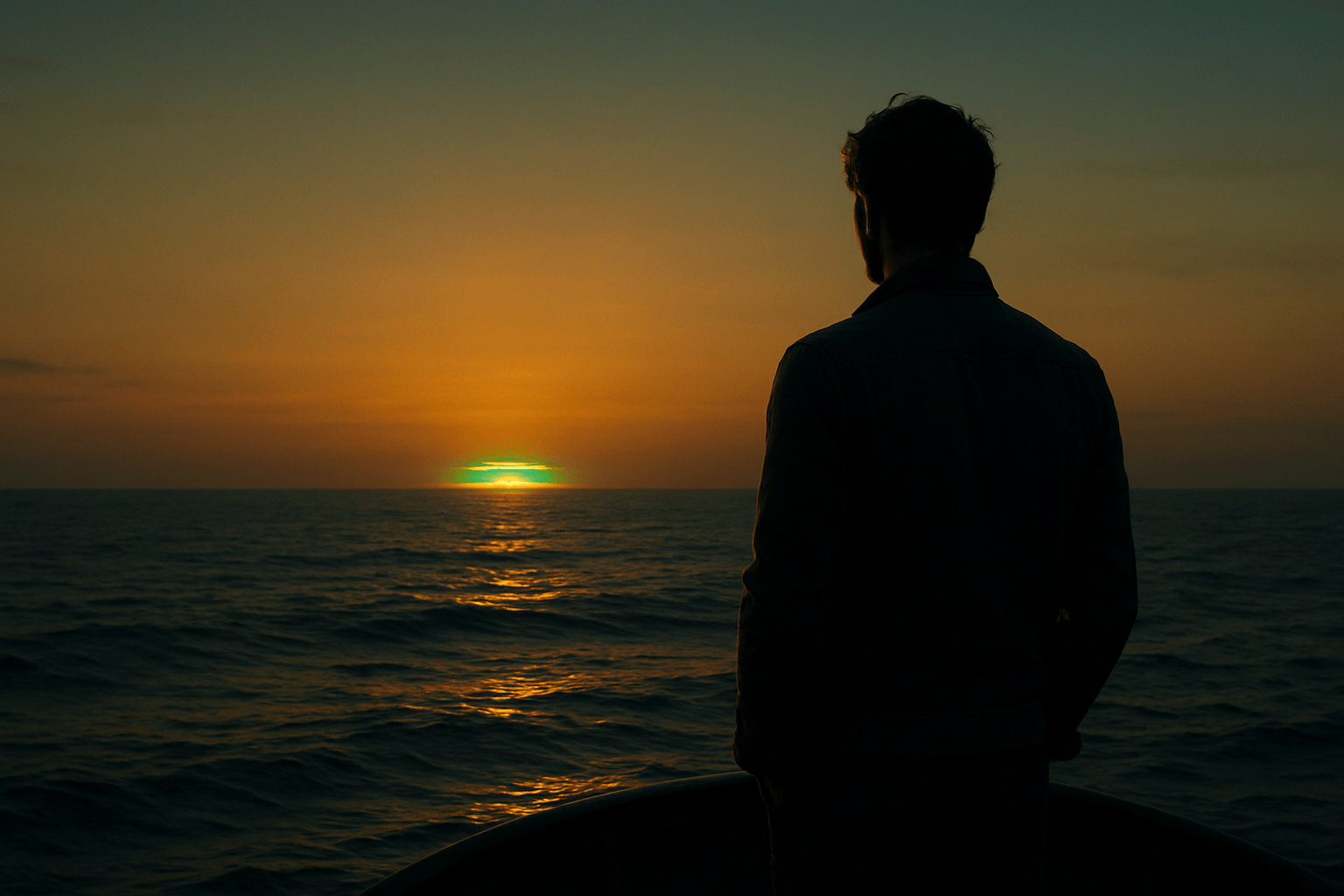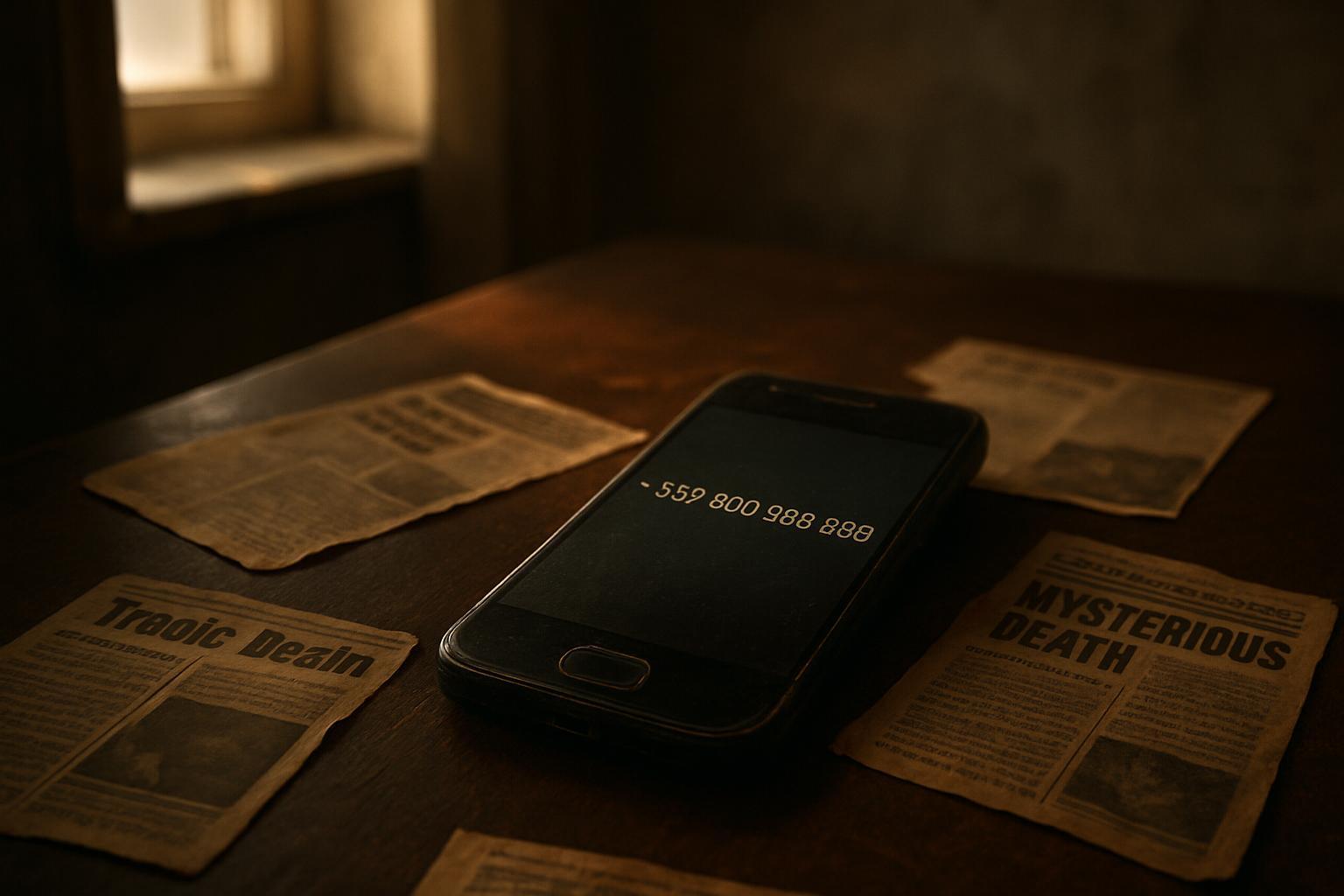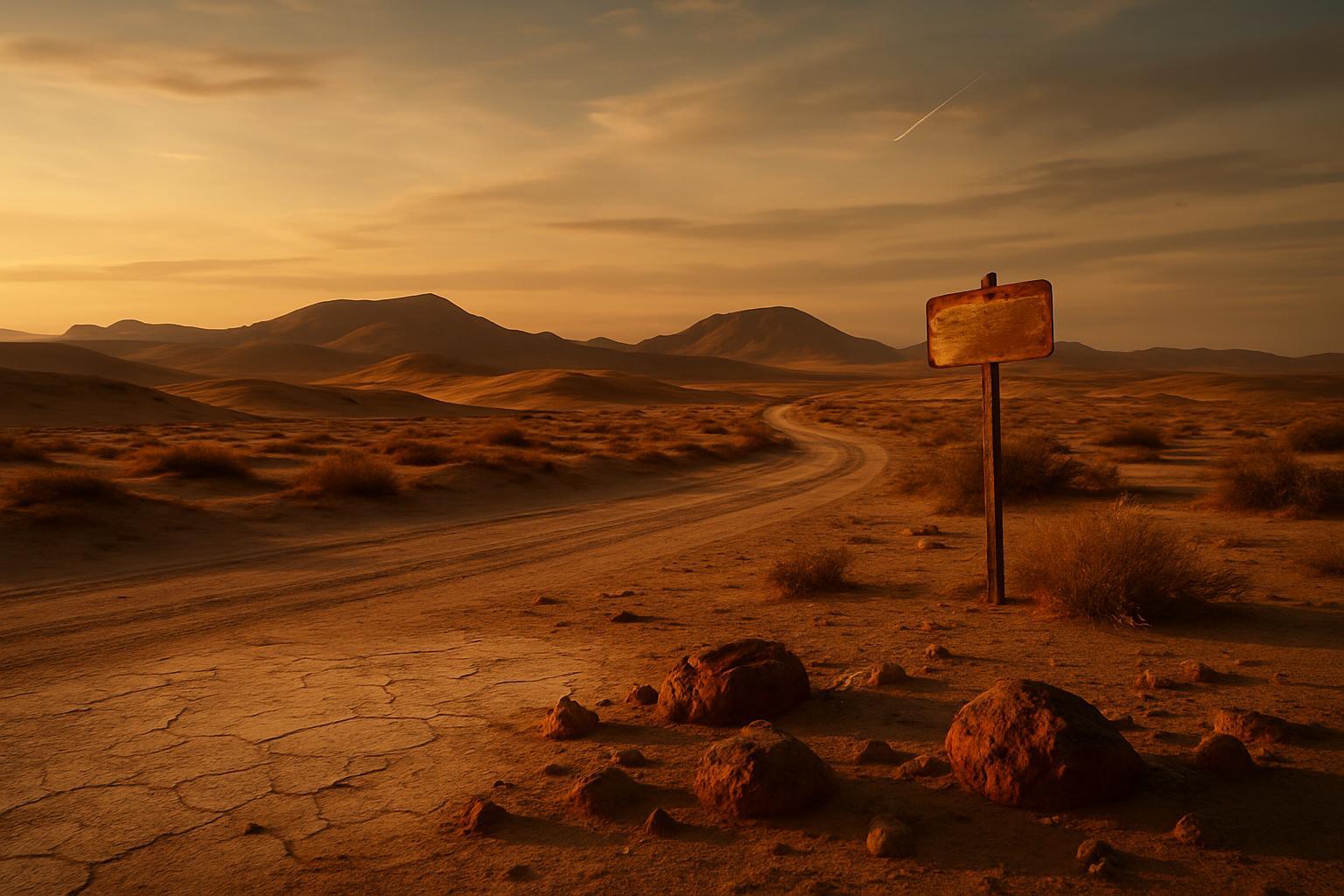Some moments in nature leave us breathless. Among them, the green flash at sunset stands out. For centuries, people have watched the horizon, waiting for that rare, glowing emerald flicker. Is this stunning event a trick of sunlight, or could it be something more—a portal or a sign from another realm? Come along as we peel back the layers of science, folklore, and imagination to uncover the truth behind the green flash.
The Elusive Emerald Moment
If you have lingered at the edge of the sea as the sun sets, perhaps you have heard whispers about the green flash. You’ll find guides urging you to keep your eyes peeled because the spectacle lasts only a brief moment. As the sun vanishes below the horizon, a sudden burst of green can appear right at the upper rim. It’s so quick—blink and you’ll miss it. Yet, for those lucky enough to spot it, the memory lingers for years.
This phenomenon has sparked awe, debate, and many myths. Some claim it is a message. Others brush it off as a rare atmospheric trick. Let’s discover where the truth lies.
What Exactly Is the Green Flash?
The green flash is a rare optical event that occurs just before sunrise or right after sunset. In the best conditions, you might see a brilliant green spot hovering above the sun’s edge for just one or two seconds. Scientists call this “the green rim” or “green flash.” Reports of this event come mostly from places with a clear view of the horizon, such as the open sea, deserts, or high mountain peaks.
Though often linked to sunsets, it can also occur at sunrise. However, spotting it at dawn is difficult because you need to know the exact spot where the sun will rise and be ready at the precise moment.
Types of Green Flashes
- Inferior-Mirage Green Flash: Common over the ocean, it’s caused by a layer of warm air lying over cooler air, creating a mirage effect.
- Mock-Mirage Green Flash: Occurs when the atmosphere is more complex, often over water during temperature inversions. This variety produces taller, distorted flashes that may appear to split or stretch.
- Flash with Green Ray: Sometimes, atmospheric conditions produce not only a flash but an upright green shaft or ray. These are exceptionally rare.
The Science Behind the Spectacle
The green flash is the result of how our atmosphere bends and splits sunlight. As sunlight enters the Earth’s atmosphere, it passes through thicker air at low angles—the same reason the sun looks red as it sinks. This thicker air acts as a prism, breaking white sunlight into colors. Each color bends at a unique angle. Blue and green bend more than red and yellow, and as a result, the upper edge of the setting or rising sun may show blue or green before the sun disappears.
But blue light scatters more and gets filtered out along the way, especially when the air is hazy or dusty. That leaves green as the most likely color, showing up for that brief flash as the sun’s last rays slip from view. Clean air, a sharp and distant horizon, and luck all play a part in making the event visible.
Necessary Conditions to Spot the Green Flash
- Clear Sky: No clouds should block the setting or rising sun.
- Distant, Flat Horizon: The best views come from the open sea or a flat plain, giving you an uninterrupted line of sight.
- Clean Air: Dust, haze, or pollution will block the required colors.
- Right Timing: You must watch at the exact moment the sun’s rim touches the horizon.
If all these conditions align, and you keep a careful watch, you may become one of the fortunate few to spot the green flash.
The Green Flash Across Time: History, Myth, and Wonder
Long before science explained the phenomenon, stories bloomed wherever people gathered to watch the sunset. For ancient mariners, the green flash was an omen—a sign that a journey would be safe, or that the gods were watching. Across cultures, the green flash grew into a symbol. Some said that seeing it would bring you good luck, or reveal hidden truths about love.
The 19th-century writer Jules Verne popularized the green flash in his novel, “The Green Ray.” In the story, the characters chase the flash across Scotland’s rugged coastlines. They believe that anyone who sees it will gain a rare insight, able to read the secret thoughts of their true love. While Verne’s book was a work of fiction, it set the green flash afire in the public imagination. Scores of travelers have since journeyed to the sea, hoping to catch a glimpse.
Legends and Folklore
- South Pacific: Some islanders believed the green flash was a doorway for spirits or a message from ancient gods.
- Caribbean: Local legends said lovers who spot the green flash together will never be parted.
- Maritime Lore: Sailors saw it as a good omen and an auspicious sign for long voyages.
Though these tales differ in detail, the core remains the same: the green flash is rare, magical, and filled with mystery.
Could the Green Flash Be a Portal?
While science speaks clearly about atmospheric refraction and light, the idea of the green flash as a portal endures. Some storytellers and theorists speculate that such rare moments might mark thin spaces between worlds, or serve as fleeting gateways to other realms. It sounds far-fetched, but let’s look closer at why this idea took hold.
Why Do People See Portals in Natural Phenomena?
From ancient times, people have looked to the sky and sea for clues about their place in the universe. Beautiful—and rare—events like the green flash carry a sense of importance. Because humans crave patterns and meaning, we are drawn to think there is a deeper message. The sudden burst of luminous color, its rarity, and its brevity feel almost otherworldly. In cultures worldwide, dramatic skies often meant divine intervention or an opening between the material and spiritual worlds.
In modern times, fantasy authors and filmmakers have used the green flash as inspiration for portals, time travel, or moments of transformation—think of pirate tales or adventure stories that feature journeys across magical seas. While these are tales, they show how the green flash fires our imagination.
Science vs. Imagination
So, is there any evidence that the green flash is more than a play of sunlight? Despite the seductive power of myth, there is no factual proof that the green flash connects us with another world. However, its beauty can transport us emotionally and spark dreams that last long after the sky fades back to normal. The boundary between science and story becomes blurred. Some would say the green flash is a portal—not to another world, but to wonder.
Chasing the Green Flash: Where and How
If reading about the green flash stirs your curiosity, you may want to see it for yourself. Because conditions must be just right, many experienced observers offer tips for maximizing your chances.
Top Spots for Viewing
- Hawaii: Beaches with clear western horizons, such as those in Maui or Kauai, often host green flash sightings.
- California: Sunset watch points along the Pacific coast, such as Big Sur or San Diego, provide panoramic views.
- The Caribbean: Islands like Barbados have frequent reports, thanks to dramatic ocean sunsets.
- The Mediterranean: High cliffs and a clean horizon away from city haze can offer a chance at seeing the flash.
- South Pacific: Open seas and clear air make this region ideal for green flash hunts.
Tips for First-Timers
- Arrive early and set up where the view of the horizon is clear and uninterrupted.
- Scan the sun’s upper rim just as it touches the sea or plain. Do this with your eyes, not a telescope, to protect your vision.
- Use sunglasses designed to view the sun safely and reduce glare—never stare at the sun directly without protection.
- Stay patient. Sometimes you need several tries to catch the right conditions.
Many watchers bring friends to increase the chance of spotting the flash—a second set of eyes often helps.
Capturing the Flash: Photos, Proof, and Pitfalls
With advances in technology, more people try to capture the green flash on camera. High-quality digital cameras with powerful zoom lenses improve your odds, but challenges remain. The flash is painfully brief, and exposure settings must be just right. Often, even skilled photographers miss the exact moment or find their images lack the color seen with the naked eye.
Some striking green flash photos are real; others are enhanced or faked. Watch for suspiciously bright or long “flashes”—the real event is fleeting and never lasts more than a second or two.
Despite the difficulty, photographers continue to chase that perfect shot. The thrill comes not just from the image itself, but from being present at a moment few get to witness.
Stories from Witnesses
The world is full of people who have spent years searching for the green flash. Some are sailors, others are travelers, and a few are scientists. All describe powerful emotions—joy, surprise, a sense of being touched by something special. Here are a few examples from around the globe.
- On a sailboat off the coast of Maui, a seasoned sailor watches the fading sun. At the last instant, a sharp emerald glow blooms and then vanishes. Tears well in his eyes—not just for the beauty, but for the accomplishment of seeing what so many have missed.
- In the Caribbean, a young couple plans their honeymoon around the green flash. After several clouded sunsets, the sky finally clears. As the sun drops, they cheer together—the flash is faint but unmistakable. They claim their bond feels stronger after sharing this rare event.
- A weather scientist in California sets up cameras each summer. After hundreds of attempts, she finally captures the green rim on video. She describes it as both “science made visible” and “a reminder that there is magic even in explained events.”
Explaining Common Misconceptions
Though the green flash is real, sometimes people mistake other effects for it. Sun glare, optical illusions, or even camera lens flares may create fake green patterns. To spot the genuine green flash, look for the flash right as the upper rim of the sun dips below the horizon. It will be green, not yellow, white, or blue, and it will appear suddenly before fading at once. Remember, no green flash is ever long or large—it’s a brief whisper of color on the sun’s edge.
Why the Green Flash Inspires Us
Nature hides treasures for those who pause and pay attention. The green flash has inspired artists, writers, sailors, and scientists for generations. It stands as a symbol of hope, a reminder that rare beauty sometimes appears only for those patient enough to wait. Its combination of science and myth draws people back year after year to the water’s edge.
This flash may not truly open a portal to other worlds, but it opens doors within us. As you watch for that elusive color, you join a long tradition of seekers. In the end, perhaps the greatest mystery of the green flash is how it changes the way we see the world—transforming a simple sunset into a moment of possibility and wonder.




